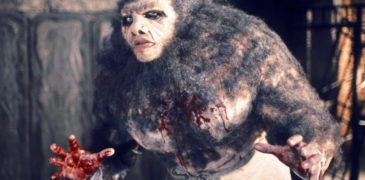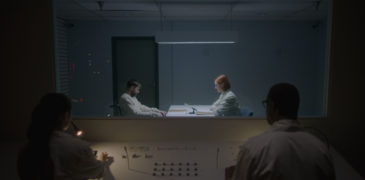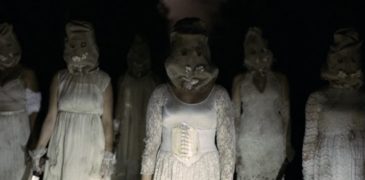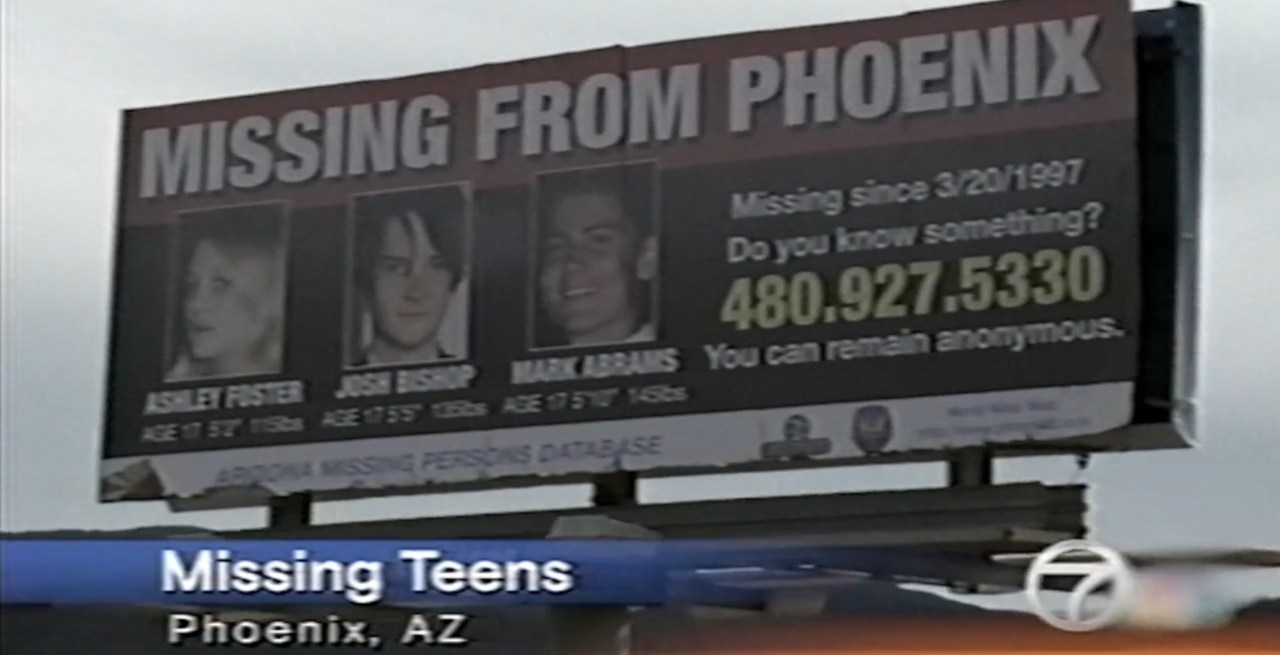
The Phoenix Lights might be one of the most intriguing pieces of UFO conspiracies on the internet. On March 13, 1997, thousands of people spotted the formation of unidentified lights in the night sky of Phoenix, Arizona, and across Nevada and Mexico. The bizarre phenomenon, which the army explained to be a military exercise consisting of multiple aircraft and flares, still baffles the curious. Now marking its 25th anniversary this year, what is a better way to celebrate it than watching a film about it?
This is where Phoenix Forgotten (2017) comes in. The directorial debut of Justin Barber saw the phenomenon fit as the backdrop for his found footage mystery. Packaged as a mockumentary, Phoenix Forgotten recounts the story behind the disappearance of three teenagers after confronting the rabbit hole surrounding the strange event. Produced by Ridley Scott, the man behind Alien, the UFO film sure garnered a lot of expectations, but the critics and audience were divided after its release. Nevertheless, the film is as worth revisiting as the case itself.

Mainly one might find the film interesting because it adapted the mockumentary setup. The faux documentary production heightens the usual idiosyncrasy of the found footage subgenre by combining disconcertingly real-seeming footage and mock interviews and investigation to elevate its believability. Considering how the film adapted a genuine, broadcasted phenomenon, the combined effort of mixing both real and fake documentation helps fabricate the intriguing story the film is trying to sell.
It is the ideal course to retell the obscurity behind the event. The film then added weight to the conspiracy by chronicling a fictional mystery that can be traced to the UFO sighting. Phoenix Forgotten is unnervingly convincing, especially in how the film shifts from being an intimate recollection of memories to how the incident impacted the state.
Aside from the aptly persuasive interviews from the family of the missing and the police involved in the case and news clippings from the phenomenon, other parts of the mockumentary effectively expounded the “alien” bias of the investigation. One is its connection to the Apache Nation. The pretend interview with the tribe member makes a fascinating addition to the concept of “alien” of other cultures. Recurrent appearance and mention of petroglyphs, in a way, legitimize the possibility of extraterrestrial visitation.
Another factor contributing to the conceivable appeal of the film is that it is packaged as an investigative documentary than purely an extraterrestrial incident. The last “found footage” from the lost teenagers within the mockumentary all leads to the possibility that it is indeed an extraterrestrial event. However, as a whole, the mockumentary proves that the mystery could be open to more prospects. The faux interviews, ambiguous pieces of evidence, and fuzzy CCTV footage of their assumed last appearance before the discovery of the lost tape don’t lead to a dead end, so viewers could freely speculate during the first half.
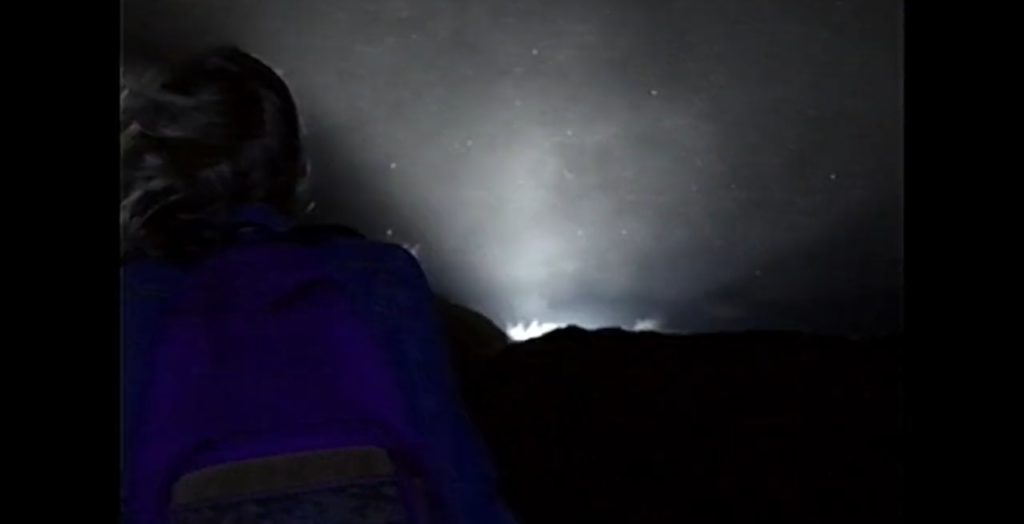
Before the revelation of this final footage, everything was well-paced, with the right amount of drama and mystery to whip up an organic investment in the incident and the characters involved. Everything glided smoothly towards a presumably unpredictable and exciting development until the mockumentary reached what we all came for. This is where viewers had divisive reception, especially those who find Blair Witch Project homages repetitive in the found footage landscape. The final tape has a few surprises that would somehow scratch our itch for an answer to the disappearance. However, it sadly fell to the predictability of found footage mysteries built on the same ground and direction. It is a prolonged, pitch black, and distressful journey into the night, so it might find its audience with those who fancy the void and the grotesque.
Aside from this, there are also unnecessary parts in the mockumentary that could affect the seriousness of the production. It is also the problem with other found footage with the same format. Mockumentaries are supposed to be edited, overseen, and finished media, so the final cut shouldn’t have unwarranted videos. But Phoenix Forgotten had fallen into the hitch by adding too personal and unedited tidbits to heighten the familial tension when, in fact, the story itself could stand without it. As such, awkward moments are inescapable, which is a bummer since the mockumentary itself is striving to convince you that it is authentic.
Phoenix Forgotten, despite its shortcomings, makes an admissible addition to your dive into the famous UFO phenomenon. It can be your gateway towards the unusual phenomenon or a supplementary watch in your handpicked Phoenix Lights video playlist, chiefly because of its gripping first half.
More Film reviews
In 1934, vaudevillian Will Hammer (real name William Hinds) diversified into the film industry. Hammer Productions Limited joined forces with Spanish entrepreneur Enrique Carreras to create Exclusive Films Limited, before… Cocaine Bear is a 2023 American comedy thriller, written by Jimmy Warden and directed by Elizabeth Banks. The film is based on the true story of a drug dealer’s plane… Directors Justin Benson and Aaron Moorhead blew me away with the debut film Resolution, an eerie tale marked by a foreboding sense of doom. Their follow-up film, Spring, I will admit being… Japanese cinema frequently uses Westerners as extras, so much so that is common for people staying in Japan for an extended period to up with an agency and fill background… Rob Schroeder delivers one incredible directorial debut with this aesthetically lush and deliciously convoluted mystery box film. After his car breaks down during a storm, our protagonist Glen (Vincent Kartheiser)… When Cami orders a taxi service to take her to her father’s country home, she’s hoping for a quiet and uneventful ride. But a wrong turn by Spencer, her chatty…Frankenstein and the Monster from Hell (1974) Film Review | Hammer Horror
Cocaine Bear (2023) Film Review – A Roaringly Good Time
Synchronic (2020) Film Review: Everyone In The Past Wants To Stab You
Schoolgirl Apocalypse (2011) Film Review – School’s Out Forever
Ultrasound (2021) Film Review – A Meticulously Composed Surreal Nightmare
The Toll (2020) Team Review – Whispers of Violence and Despair

I am a 4th year Journalism student from the Polytechnic University of the Philipines and an aspiring Filmmaker. I fancy found footage, home invasions, and gore films. Randomly unearthing good films is my third favorite thing in life. The second and first are suspending disbelief and dozing off.
